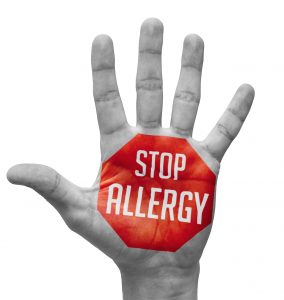My first memory of an allergic asthma reaction is from when I was maybe three or four years old.
We were visiting family friends in the country, and their property was surrounded by hay, or at the very least, tall pollen-infested grass.

Shortly after arrival, I remember chasing my older brother and the other kids into said grass. And well … things got scary very quickly.
Moments later I was wheezing and remember being carried inside, gasping for air. That was the beginning of my long battle with allergies, asthma included.
What is allergic asthma?
According to Dr Scott Claxton, Sleep and Respiratory Physician at GenesisCare in Perth, “asthma is a heterogenous disease of the small-to-medium air passages in the lungs”.
When the walls of the airways become inflamed, this makes them irritable, he says, leading to muscle spasms in the airway making it difficult to breathe.
“The inflammation leads to the thickening of the walls of the airways and increased mucous production, causing asthma symptoms such as wheeze, breathlessness chest tightness and cough,” explains Dr Claxton.
“In allergic asthma, the driver to inflammation is exposure to inhaled substances (allergens).”
Dr Simon Bowler, Associate Professor at the University of Queensland and Director of Respiratory Medicine at the Mater Hospital in Brisbane, adds that, while “asthma comes in many phenotypes (the expressions of the illness)”, allergic asthma “is one of the commonest” forms of asthma and is “the form of asthma that is most common in young people (but it can occur at any age)”.
“Allergic asthma … relates to allergy being an inappropriate reaction to an otherwise harmless substance. In the lungs that inappropriate reaction is manifested by an acute reaction and then a delayed reaction after exposure to allergens,” says Dr Bowler.
Allergic asthma contributors
As with most allergies and intolerances, there’s not just one thing that triggers allergic asthma.
Dr Claxton lists some common triggers to look out for, typically including inhaled substances or ‘aeroallergens’:
- Pollens
- House dust mites
- Moulds
- Pet fur.
He adds that in some instances, “medications (e.g., aspirin) can trigger asthma” but that “this is by a different inflammation pathway”.

“Allergy usually implies a particular process with specific processes involved. These can be targets for treatment,” says Dr Claxton.
“Other allergies, e.g., food allergies such as peanut allergy, can have asthma symptoms as part of the allergy response, but it’s often more systemic than just inflammation in the lower airways.”
Allergic asthma management
According to Dr Claxton, “the basic treatment of allergic asthma is that of any asthma”.
Treatment involves “avoiding triggers, confirming the diagnosis of asthma (there are a number of conditions that can behave like asthma, especially in older people), [and] educating the patient on what asthma is”.
He adds that treatment or management of allergic asthma also involves “starting a regular steroid-based preventer” (a type of inhaler) and “educating the patient on the importance of the preventer and how to use the device”.
“Allergic asthma can be helped by avoiding the allergen if it can be identified,” adds Dr Claxton.
“Desensitisation can be helpful managing allergy symptoms, including asthma, if the allergen can be identified. There are some sublingual desensitisation therapies now in place of the injections.”
It seems logical that by removing an allergen an allergic asthma sufferer could minimise their asthma exacerbations and “the asthma would go away”.
However, as Dr Bowler points out, “while that’s theoretically possible if it’s only a very mild asthma, which is only very occasionally triggered, for the most part … if you get rid of [one] allergen there are others that you [may] need to consider”.
As with other chronic conditions, Dr Claxton underscores the importance of regular follow up by the medical team.
“Patients with asthma should be reviewed regularly to ensure the condition is controlled,” he says.
“Control of asthma means no or minimal symptoms rather than, as some people think, symptoms controlled by reliever inhalers (e.g., Ventolin).
“If asthma isn’t controlled with regular preventer medication there are newer biological treatments for some asthma subtypes, including allergic asthma (Xolair).”
Role of a pharmacist
Pharmacists and pharmacy assistants have an important role to play within the asthma management team.
“In allergic asthma, as with every other asthma, the pharmacist and pharmacy assistant have a role in ensuring control and compliance with treatment (e.g., someone who’s buying Ventolin: are they on a preventer?) [and in] helping with patient education about asthma, the asthma treatment plan and the inhaler device,” says Dr Claxton.
He adds that one of the reasons for poor asthma management and control is incorrect use of the inhaler device, which works best if used properly.
“Ensuring that the patient understands what asthma is, what the treatments are for and how to use the inhaler they’ve been prescribed goes a long way to controlling asthma effectively,” he says.
To learn more about allergic asthma, and to find out about the link between diet and asthma, make sure you read the full article in this month’s issue of Retail Pharmacy magazine. Available now!







